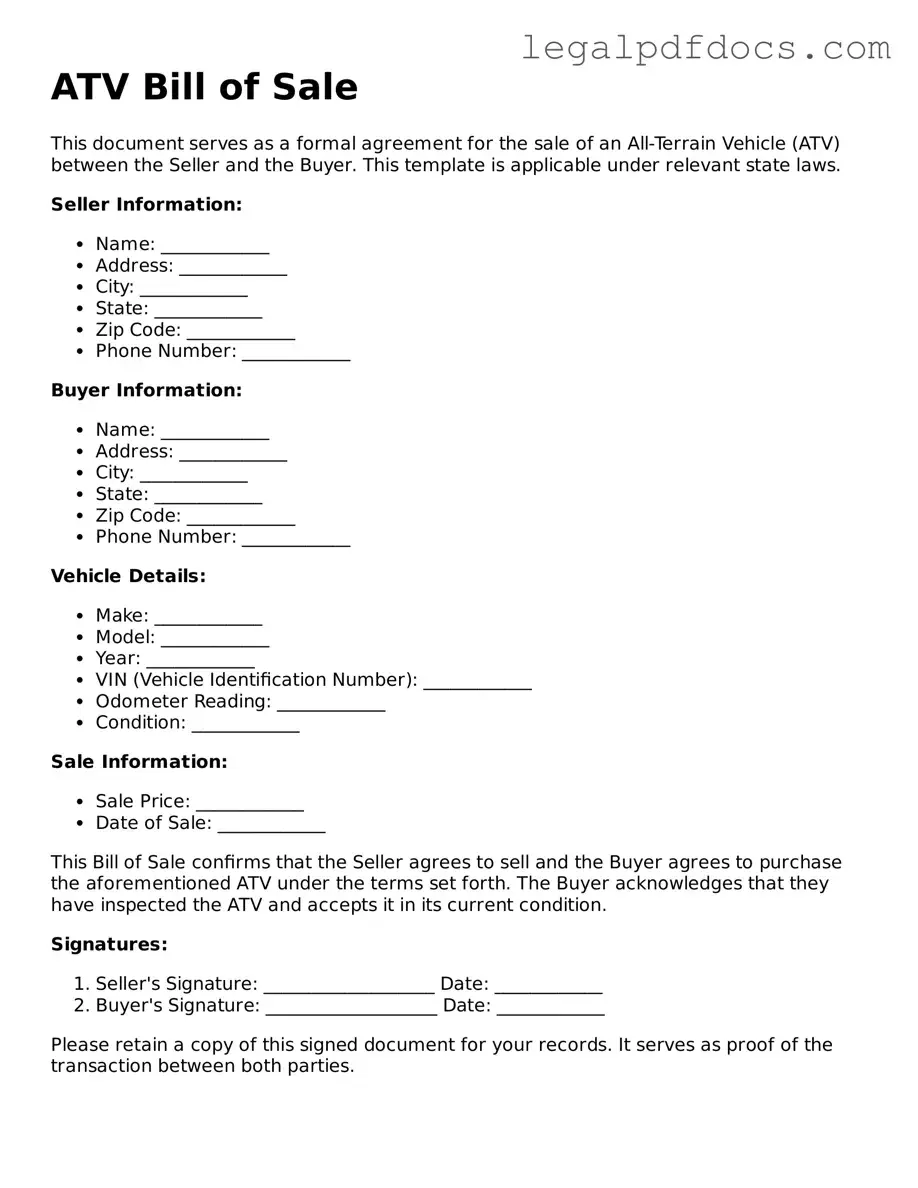ATV Bill of Sale Template
An ATV Bill of Sale form is a legal document that records the transfer of ownership of an all-terrain vehicle (ATV) from one person to another. This form serves as proof of the transaction and includes important details such as the buyer's and seller's information, the vehicle's description, and the sale price. To ensure a smooth transfer, it's essential to fill out this form accurately.
Complete the ATV Bill of Sale form by clicking the button below.
Open ATV Bill of Sale Editor Here
